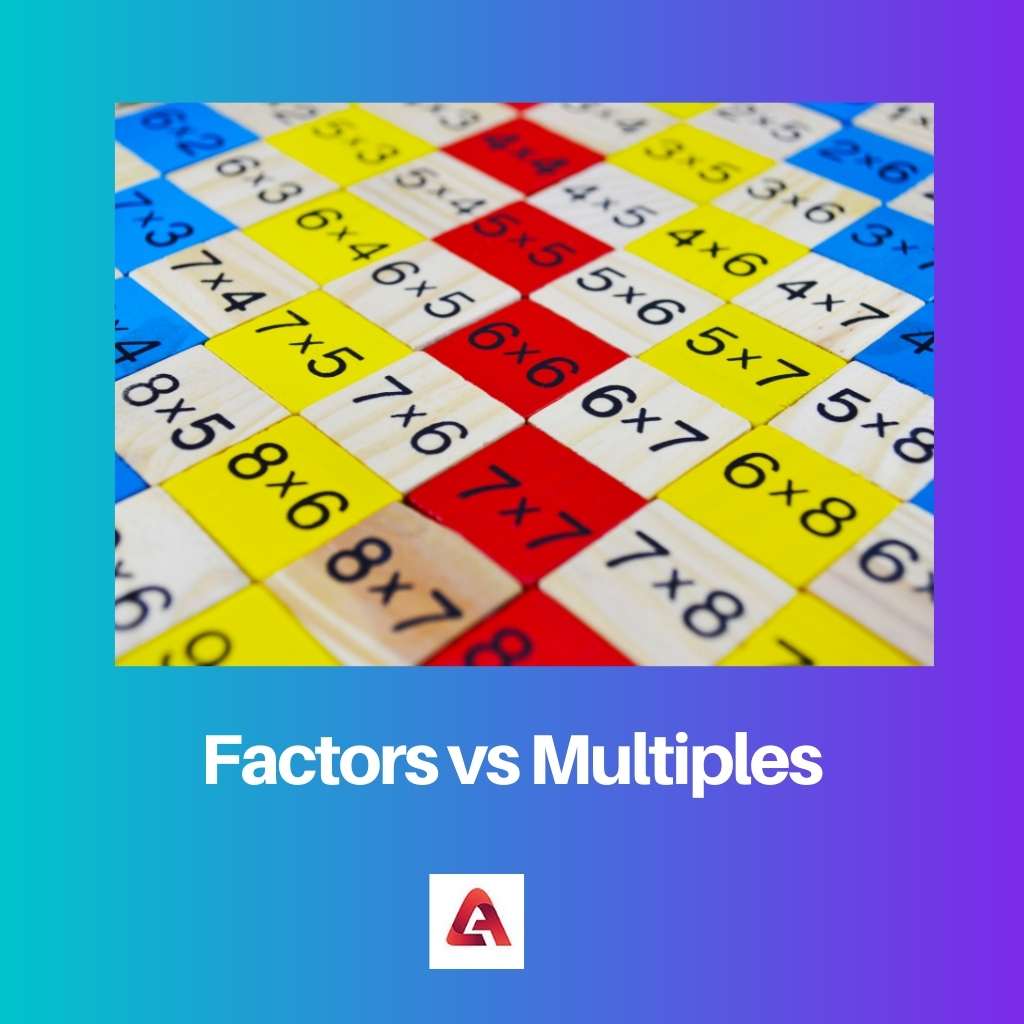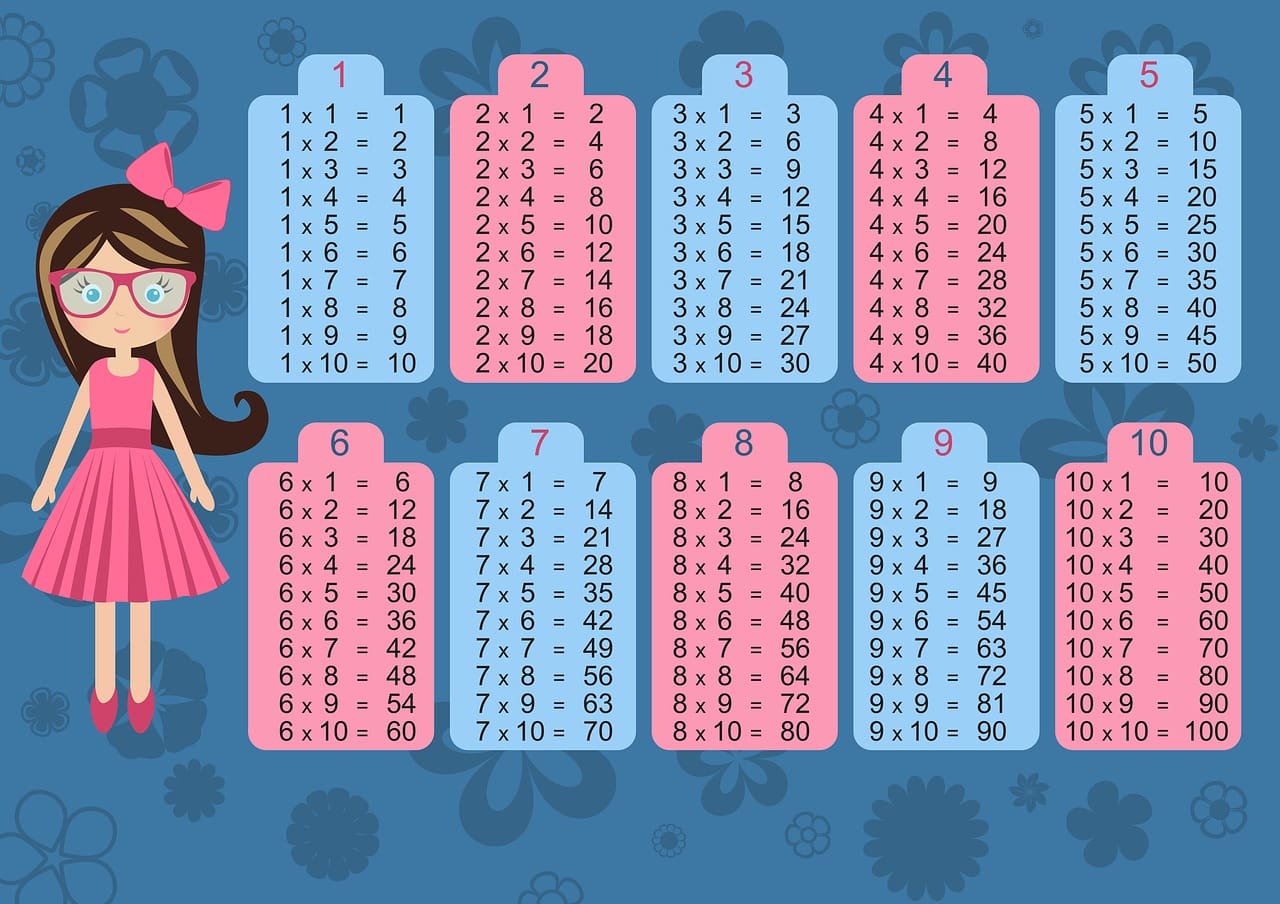The multiplicand and multiplier are commonly referred to as factors. Factors mostly comprise the dividend and divisor, or the multiplicand and multiplier, respectively.
Factors are regarded as proper divisors of any given number. Multiple is a term that describes a result reached by multiplying the elements.
Multiples can be calculated when the integers are split or multiplied. The result, the product, and the numbers are primarily made up of multiples, which are divided or multiplied by factors.
Key Takeaways
- Factors are numbers that evenly divide into a given number.
- Multiples are numbers obtained by multiplying a given number by an integer.
- Factors are smaller or equal to the original number, while multiples are equal or larger.
Factors vs Multiples
Factors are numbers that can be multiplied together to give a particular product. For example, the factors of 12 are 1, 2, 3, 4, 6, and 12 because these are the numbers that can be multiplied to give 12. Multiples result from multiplying a number by an integer (a whole number). For example, the first six multiples of 3 are 3, 6, 9, 12, 15, and 18.

A factor is a number that can be multiplied to get another number. The amount of factors that can be obtained by using the division method is limited in quantity or number.
The result of the factors acquired in the case of factors is either equal to or less than the specified number. The “Division” procedure is used to obtain characteristics.
The ancient Greek mathematician Euclid was the first to use acquiring factors.
Multiples are created by multiplying two separate numbers. Multiples are the results of multiplying two integers together.
The amount of multiples that can be obtained by multiplying is infinite in number or quantity. The outcome, product, or multiples obtained in multiples are equal to or greater than the provided number.
“mulOperationon” is used to obtain the product or multiples. Around four thousand years ago, the Babylonians were responsible for the introduction of the new notion of multiples.
Comparison Table
| Parameters of Comparison | Factors | Multiples |
|---|---|---|
| Introduced by | Euclid | The Babylonians |
| Meaning | Exact divisors | When two different numbers are multiplied, they give rise to Multiples |
| What’s it | The number can be multiplied to obtain some other number. | Product is obtained after the process of multiplying one number with another integer. |
| Quantity | Finite | Infinite |
| Outcome | Equal to or less than the given number | Equal to or more than the given number |
What are the Factors?
The outcome of the factors acquired is either equal to or less than the supplied number in the case of elements. “Division” is the operation that isOperationobtain factors.
A factor is a number that can be multiplied to produce another number. The amount of factors that can be obtained through the division process is limited in quantity or number.
The multiplicand and the multiplier are commonly referred to as factors. Factors primarily comprise the dividend and divisor, or the multiplicand and multiplier.
For the first time, Euclid, an ancient Greek mathematician, used this concept of finding factors. Factors are regarded as the exact divisors of any given integer.
What are Multiples?
The operation of “mulOperationon” is carried out to obtain the product or multiples. Around four thousand years ago, the Babylonians were responsible for creating the new concept of multiples.
In terms of number or quantity, the number of multiples that can be obtained by performing the multiplication operation is limitless.
The outcome, product, or multiples obtained in the case of multiples is either equal to or larger than the provided number.
Multiples refer to a result that is generated by multiplying the factors. Multiples can be calculated by dividing or multiplying integers.
The product of multiplying one number by another integer is known as a multiple.
The outcome, the product, and the numbers that are divided or multiplied are mostly multiples. Multiples are created when two separate numbers are multiplied.

Main Differences Between Factors and Multiples
- Factors refer to the combination of the multiplicand and the multiplier. On the other hand, when the result is obtained by multiplying the elements, it is called multiples. When the integers get divided or multiplied, then multiples can be derived.
- Factors mainly constitute either dividend and the divisor or the multiplicand and the multiplier. On the other hand, multiples especially form the result, the product, and the numbers through which factors are either divided or multiplied.
- Of any given number, factors are considered as the exact divisors. On the other hand, when two different numbers are multiplied, they give rise to Multiples.
- The factor is a type of number that can be multiplied to obtain another number. On the other hand, multiples are the product that is received after the process of multiplying one number with another integer.
- The number of factors that can be achieved by carrying out the division process is finite in quantity or number. On the other hand, the number of multiples that can be obtained by carrying out the multiplication procedure is infinite in number or amount.
- In the case of factors, the result of the factors obtained is either equal to or less than the given number. On the other hand, in the case of multiples, the development, product, or the multiples obtained is either equal to or greater than the given number.
- The operation that is Operation Out to obtain factors is “Division.” On the other hand, the Operation that is Operation Out to get the product or the multiples is done through the “Multiplication.”
- Euclid, the ancient Greek mathematician, was the person who used this concept of obtaining factors for the first time. On the other hand, the Babylonians are responsible for introducing the new concept of multiples around four thousand years ago.
- https://dergipark.org.tr/en/download/article-file/2173766#page=31
- https://www.tandfonline.com/doi/abs/10.1080/00207390701783264

Finally, a comprehensive comparison between factors and multiples explained in every detail.
The article is concise and well-structured, making it quick and easy to understand.
The article could be a little more comprehensive in explaining the origin of these concepts.
The information on the origins of factors and multiples was unfortunately lacking.
The ancient history on the subject provides interesting insight.
A lot of valuable information on the differences between factors and multiples was presented.
An extremely thorough analysis of the subject, it clarifies every area with precision.
The content seems to be educational, but the language is too technical and could be simplified.